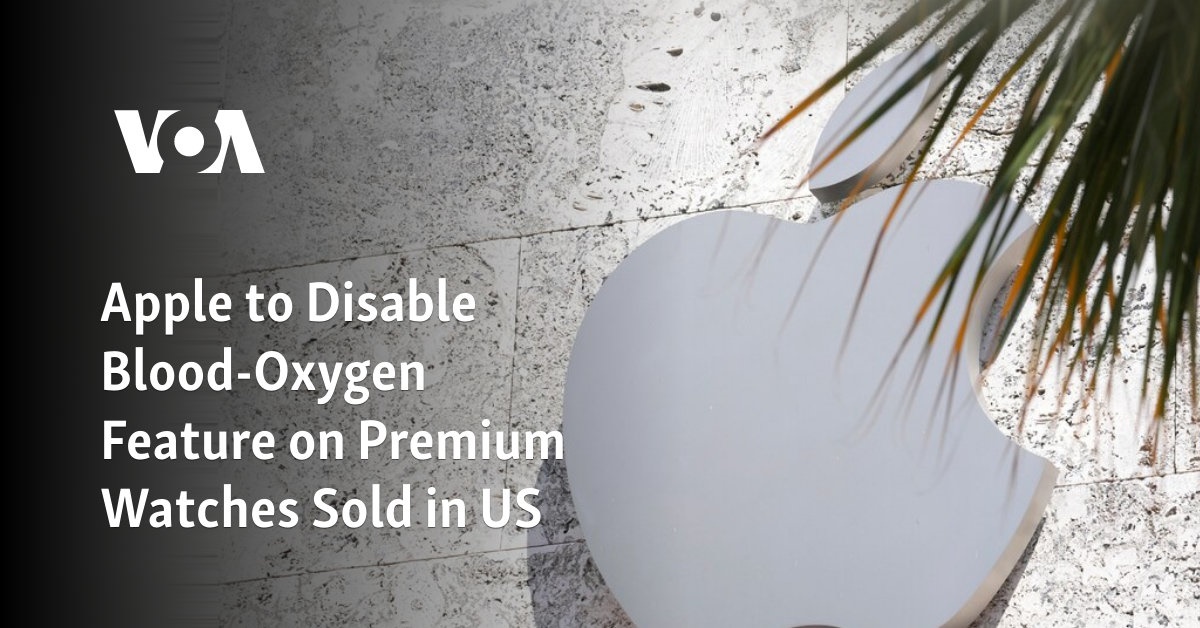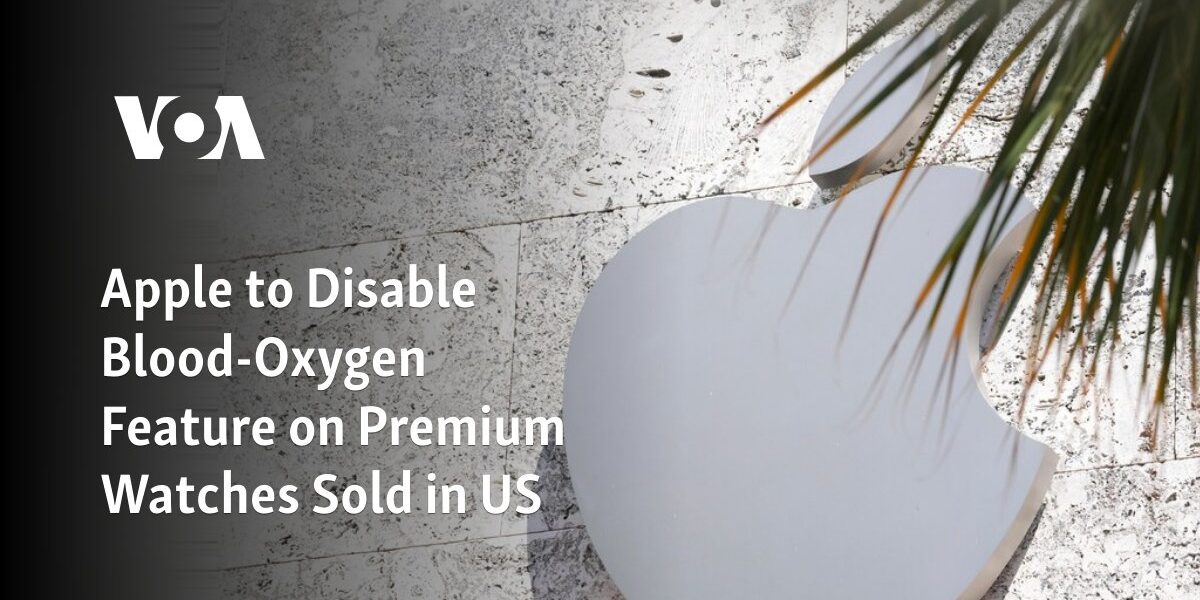Apple will deactivate the blood-oxygen function on high-end watches sold in the United States.

Starting on Thursday, Apple will turn off a blood-oxygen tracking function on its top two watch models in the United States. This is in response to a court-ordered reinstatement of a ban on sales due to a patent disagreement.
The choice to disable the blood-oxygen detection feature for U.S. customers purchasing the Apple Watch Series 9 or Ultra 2 was made following a federal appeals court’s denial of an extension for a previous order that had kept the watches available for purchase while a legal dispute over technology rights was ongoing.
Three weeks ago, the U.S. Court of Appeals granted a temporary stay that permitted two watch models to be sold in U.S. stores again. This decision came after Apple had removed them from shelves and websites right before Christmas, due to an ongoing dispute with medical technology company Masimo.
In October, the U.S. International Trade Commission determined that the blood-oxygen sensor used in Apple Watch models violated Masimo’s patents. Apple is currently appealing this decision in court, but it may take up to a year for the process to conclude. This means that the company, based in Cupertino, California, must find an alternative solution to maintain the availability of its high-end watches in the United States.
On Monday, Masimo announced that Apple has received approval from the U.S. Customs and Border Protection to make changes to their watches that would remove the blood-oxygen sensor.
Apple is expressing confidence in their ability to win the appeal against the ITC ruling by including a Blood Oxygen icon on the Series 9 and Ultra 2 models sold in the U.S. starting on Thursday. However, when users press the icon, they will receive a notification stating that the technology is not currently available.
Customers who previously bought the Series 9 and Ultra 2 versions in the United States can still utilize the blood-oxygen sensor as before. The sensor will remain functional on watches bought outside of the U.S.
If Apple had chosen to discontinue the Series 9 and Ultra 2 in the United States, it could have had a negative impact on the company’s yearly sales of $383 billion. While the exact number of Apple Watch sales is not publicly disclosed, experts believe that the product brings in roughly $18 billion in revenue each year.
The SE, a more affordable version of Apple’s watch, remains unaffected by the alterations resulting from the conflict with Masimo because it never included the blood oxygen feature. However, this technology, introduced in 2020, has been integral to Apple’s goal of marketing the watches as life-saving devices for monitoring one’s health.
Apple has requested the appeals court to maintain the ban on sales, stating that implementing the patent order from the ITC would result in unjustified damage to a groundbreaking product created by an iconic American company that currently employs over 90,000 people in the United States.
According to Masimo’s argument, the sales prohibition of certain Apple Watch models in the U.S. will not greatly affect the company as the majority of its income is generated by the iPhone.
Additionally, Masimo aimed to depict Apple as a large company using aggressive tactics to steal intellectual property that is commonly used in hospitals and by healthcare professionals who care for approximately 200 million patients each year.
Source: voanews.com




